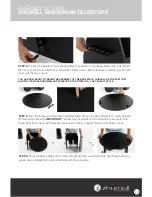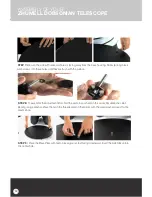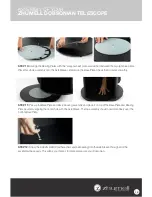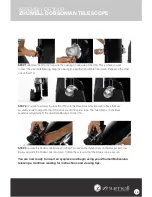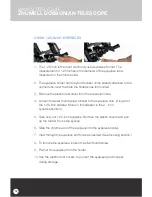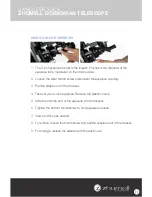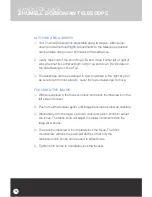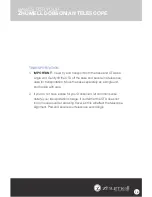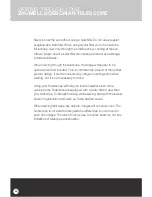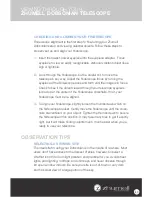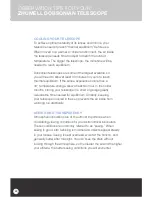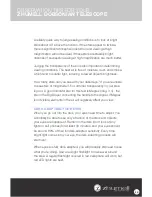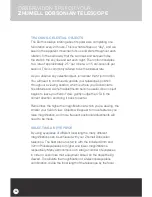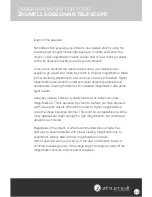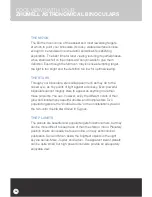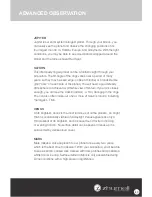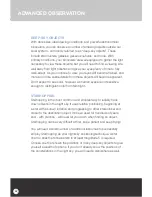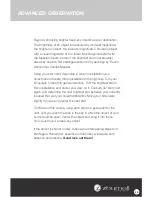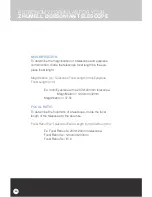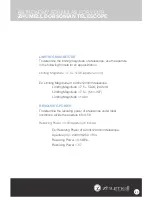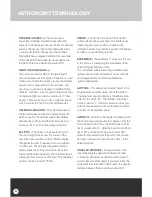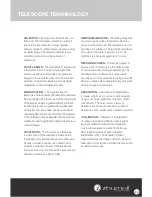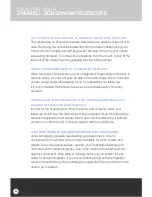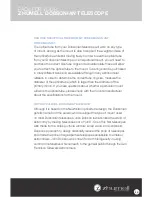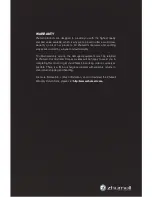
24
TRACKING CELESTIAL OBJECTS
The Earth is always rotating about its polar axis, completing one
full rotation every 24 hours. This is what defines our “day”, and we
see it in the apparent movement of sun and stars throughout each
rotation. In the same way that the sun rises and sets each day,
the stars in the sky rise and set each night. The motion translates
to a rate of approximately .25° per minute, or 15 arc-seconds per
second. This is commonly referred to as the sidereal rate.
As you observe any celestial object, remember that it is in motion.
You will need to continuously update your telescope’s position
throughout a viewing session, which is where your Dobsonian’s
fine altitude and azimuth adjustments become useful. As an object
begins to leave your field of view, gently nudge the OTA in the
correct direction and bring it back to center.
Remember, the higher the magnification at which you’re viewing, the
smaller your field of view. Objects will appear to move faster as you
raise magnification, and more frequent positional adjustments will
need to be made.
SELECTING AN EYEPIECE
By using eyepieces of different focal lengths, many different
magnifications can be achieved with your Zhumell Dobsonian
telescope. The best place to start is with the included 9mm and
32mm Plossl eyepieces for higher and lower magnifications,
respectively. Many astronomers own a large number of eyepieces
in order to customize their equipment based on the object being
viewed. To calculate the magnification of a telescope/eyepiece
combination, divide the focal length of the telescope by the focal
OBSERVATION TIPS FOR YOUR
ZHUMELL DOBSONIAN TELESCOPE


